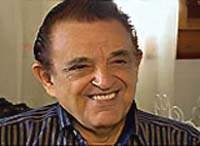
Havana ephemeris. July 21.
1826. Joaquín Lorenzo Luaces is born in Havana.

He studied Latin at the Calasancio School of Santa María del Puerto del Príncipe, today Camagüey, where his brother lived.
Starting in 1840, he studied at the Colegio Seminario de San Carlos, in Havana. He graduated with a Bachelor of Arts in 1844. He continued studying at the University of Havana. Since 1848 he participated in the literary and scientific gathering presided over by Felipe Poey, a figure in the history of science in Cuba. These gatherings were held at Poey's house on Amistad Street, in the current Centro Habana municipality. There he read his first essays. He also released some light and festive poetry that he did not pick up in his works.
In 1856, together with his great friend, the Bayamese poet José Fornaris, he edited La Piragua, a newspaper that aspired to be the organ of Siboneyism and in which he published poems, stories and other works in prose.
He also published works in important magazines, among them Brisas de Cuba, El Cesto de Flores, Floresta Cubana, Revista de La Habana, El Kaleidoscopio, Revista Habanera and Cuba Literaria; as well as in various newspapers. His works appeared in the compilations Aguinaldo habanero and Literary nights at Nicolás Azcárate's house.
In 1859 he received the Liceo de La Habana prize for his ode to Ciro Fiel for the submersion of the submarine cable. He wrote other poems as well as the drama The Red Beggar in 1859 and the tragedy Aristodemus in 1867.
His best known theatrical works were The Golden Calf, The Ghost of Aravaca and One Hour in the Life of a Skull, the latter, turned out to be the only one that he could premiere in his lifetime.
His death occurred in the Cuban capital on November 7, 1867.
2006. Antonio Eddy Martín dies in Havana.

He came to journalism via radio. He began in 1944 at the CMJH radio station in Ciego de Ávila, which they called "The voice of RCA Víctor", making a sports newscast. As of 1947 he ventured into the printed press in the weekly Cuba Deportiva and América Deportiva. The following year, in Havana, he worked as a sports narrator. During the stage of the reactionary military dictatorship of Fulgencio Batista, between 1952 and 1958, he was imprisoned twice for having collaborated with him in the revolutionary struggle.
After the triumph of the Revolution, in January 1959, he began to collaborate in the Newspaper News of Today, the Revolution Newspaper and the Bohemia Magazine. Afterwards, his work was also reflected in the Granma and Juventud Rebelde newspapers, as well as in the publications of the National Institute of Sports, Physical Education and Recreation, INDER. Together with this, he worked in the transmission of sporting events through radio and television.
He participated in the transmission of the Olympics, World Championships, Pan American and Central American Games, as well as other national and international sporting events. In a very special way, he stood out for his elegant way, and at the same time, a well-documented way, of narrating the development of the ball games of the Cuban national series.
For his meritorious work he received various awards and recognitions, among others, the Distinction for National Culture, the Replica of the Machete of Máximo Gómez and the Replica of the Machete of Serafín Sánchez, the José Martí National Prize for Journalism for the work of his life and the title of Hero of Labor of the Republic of Cuba.